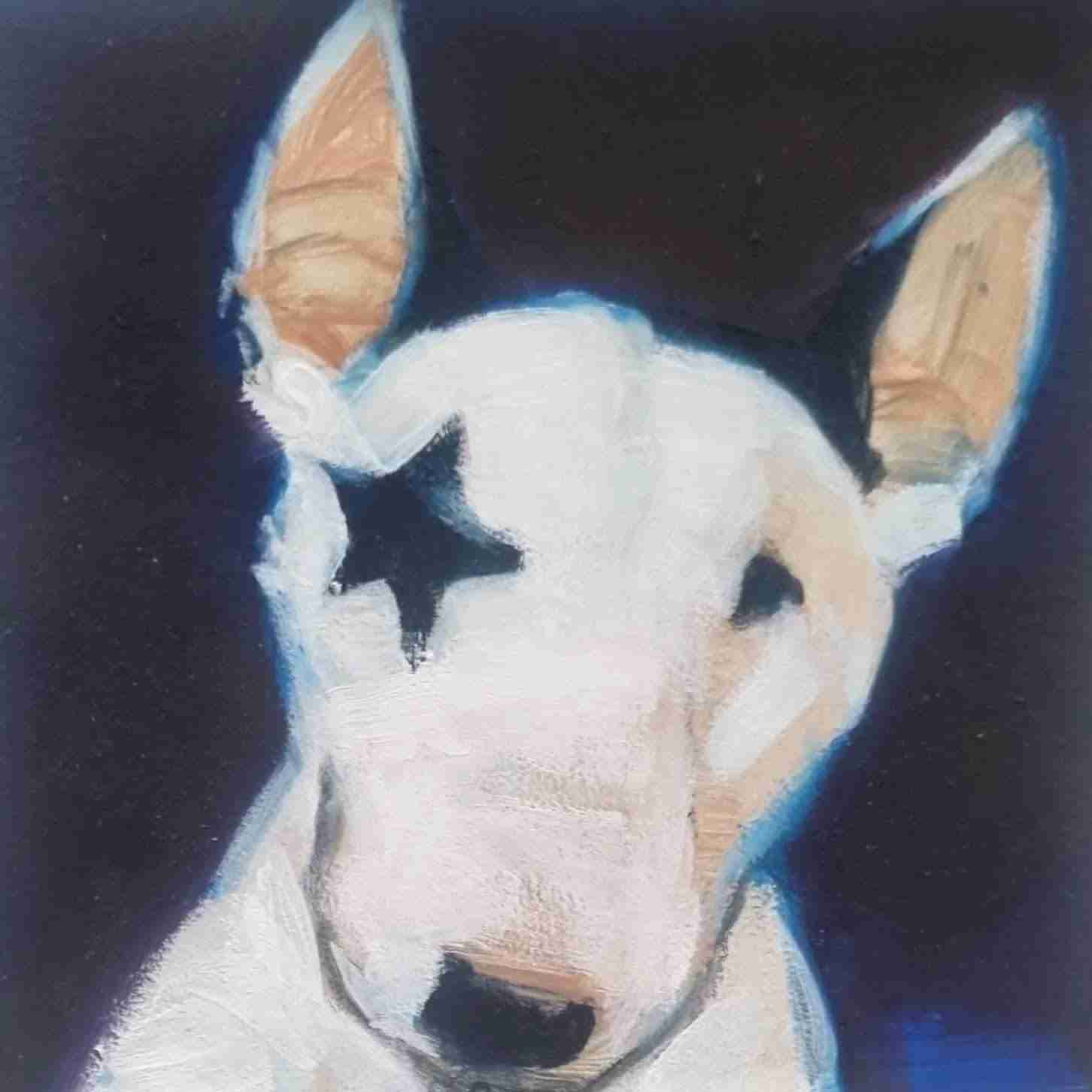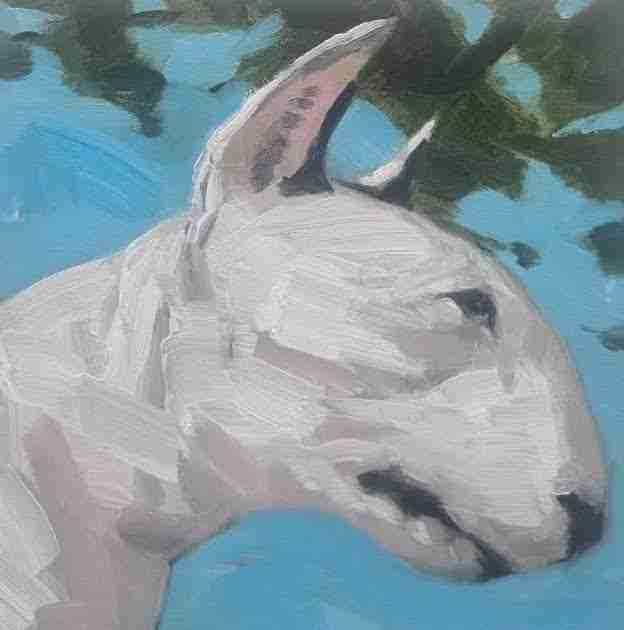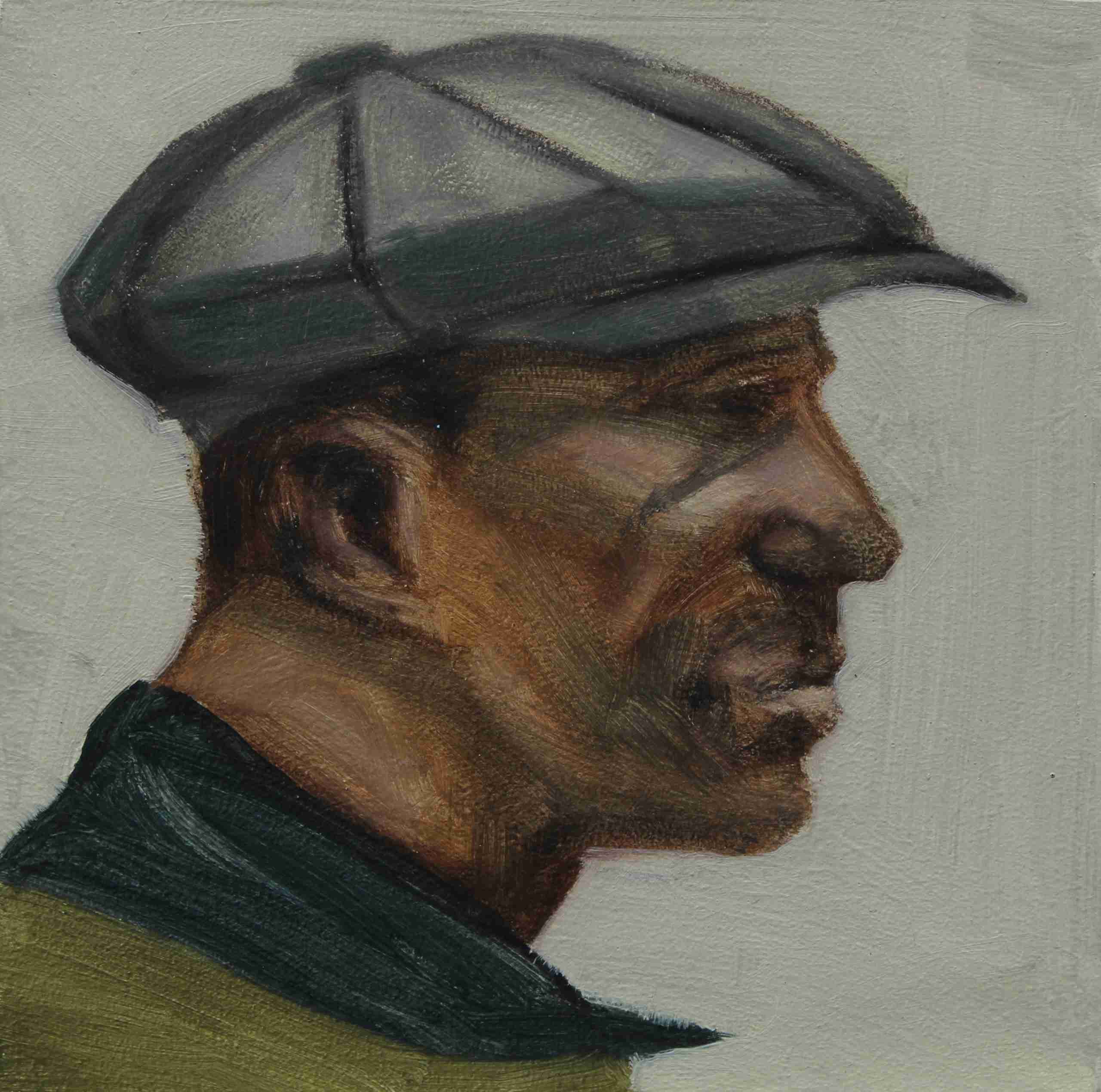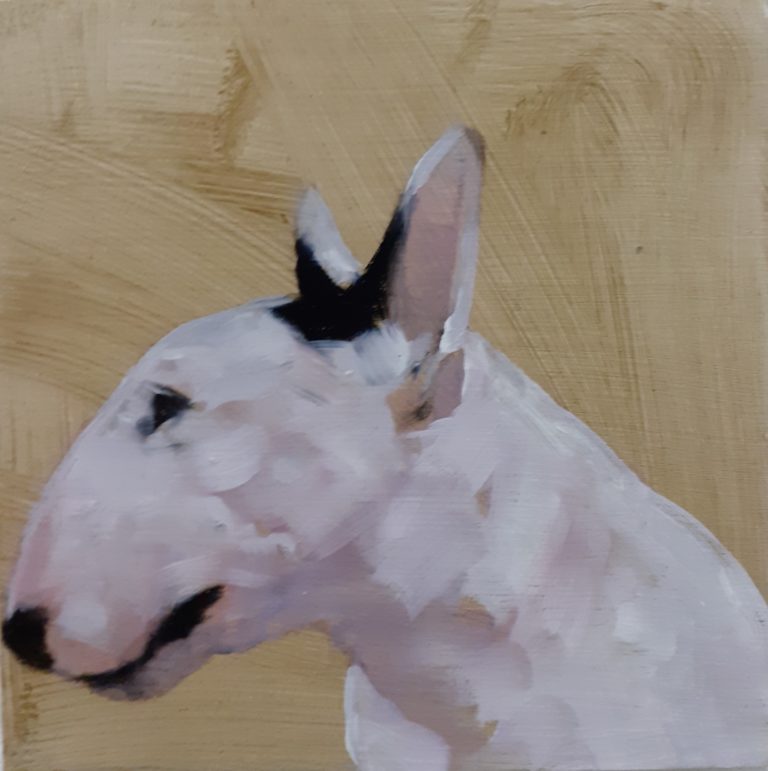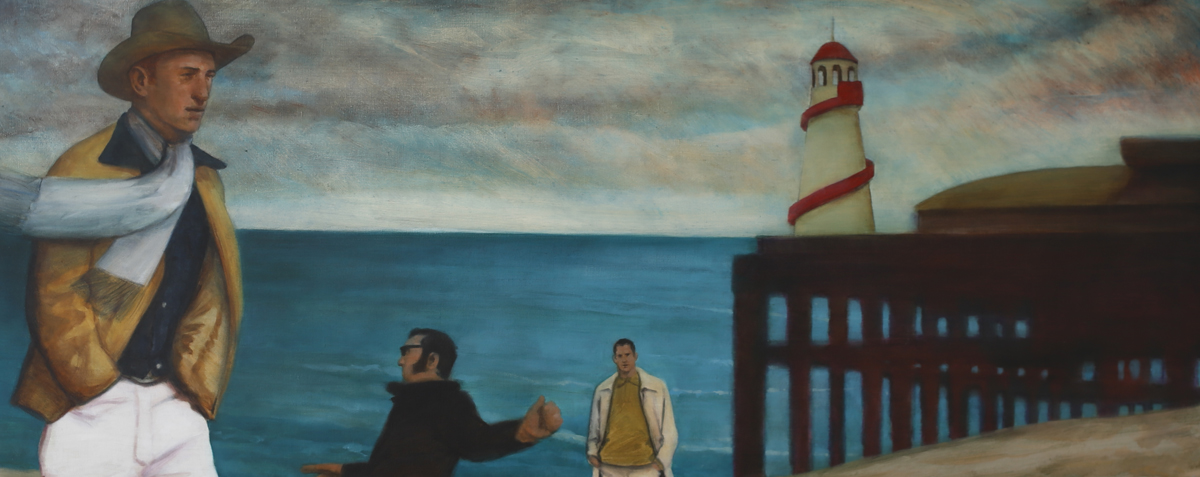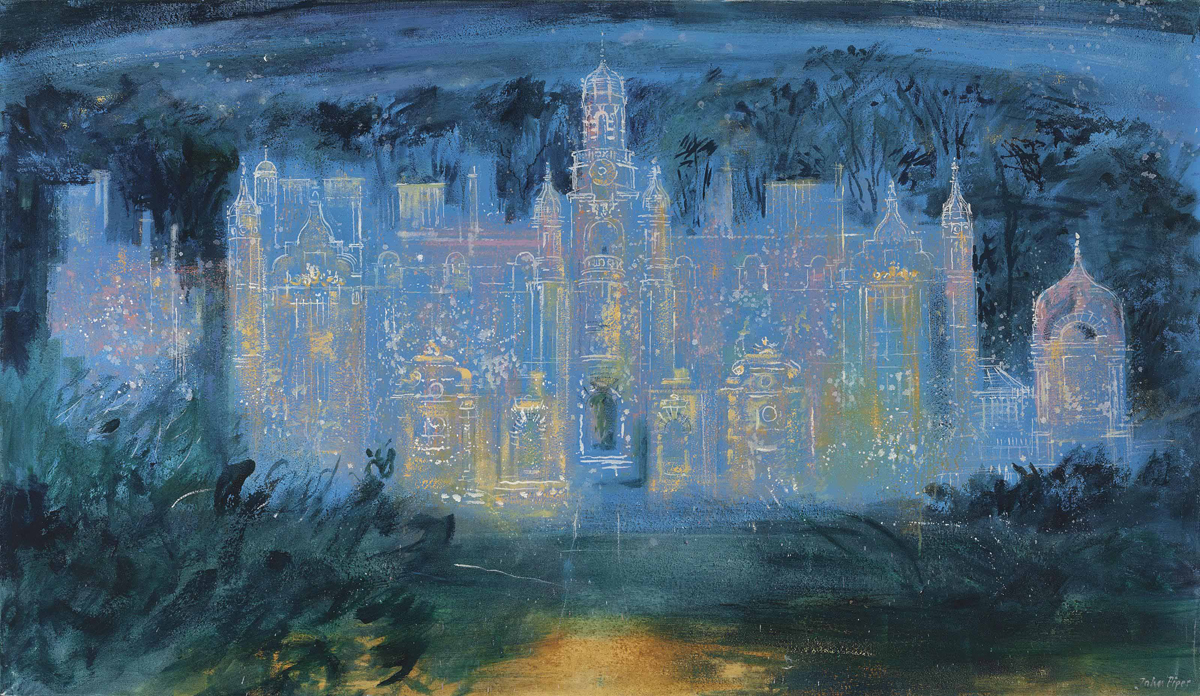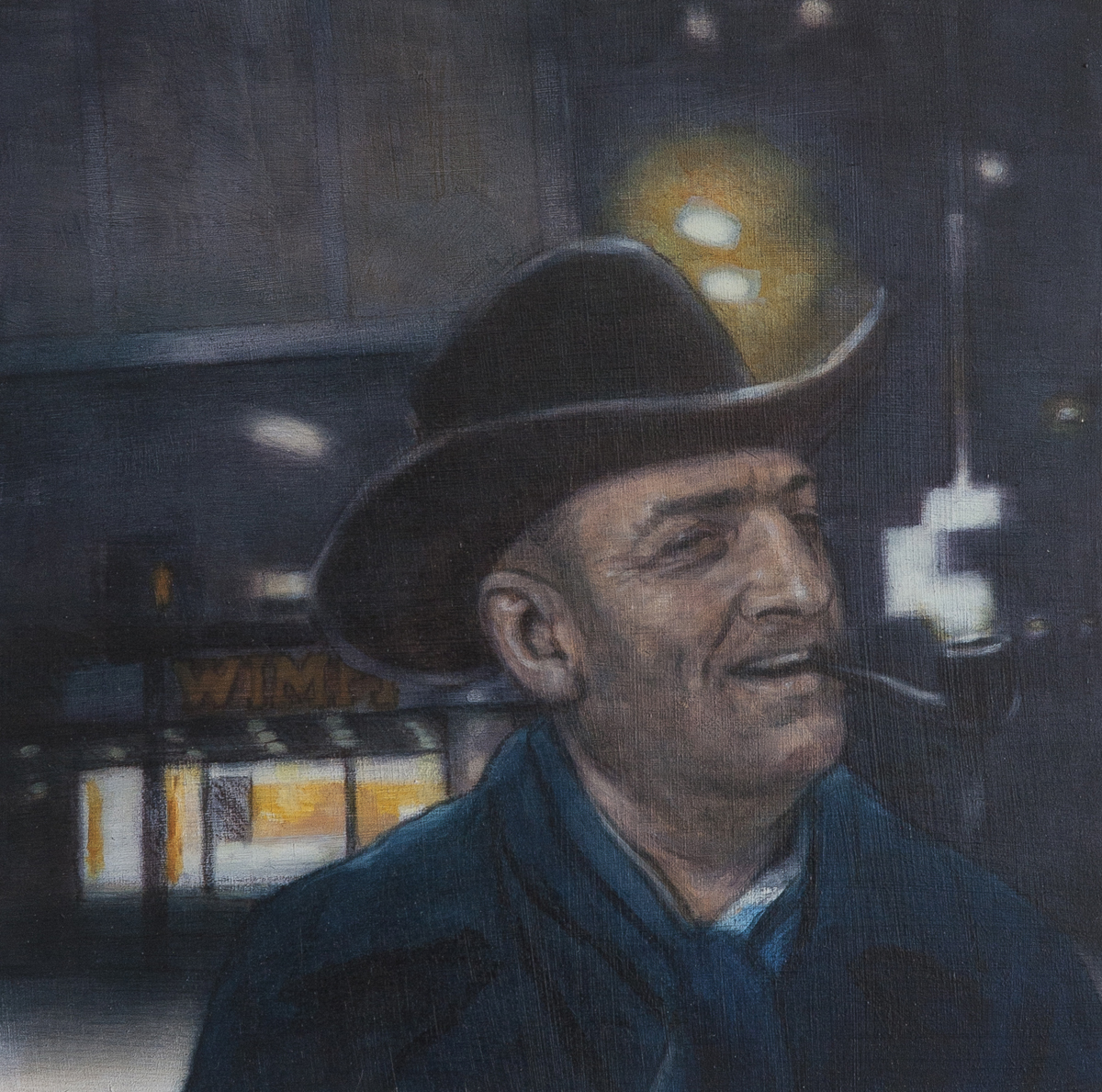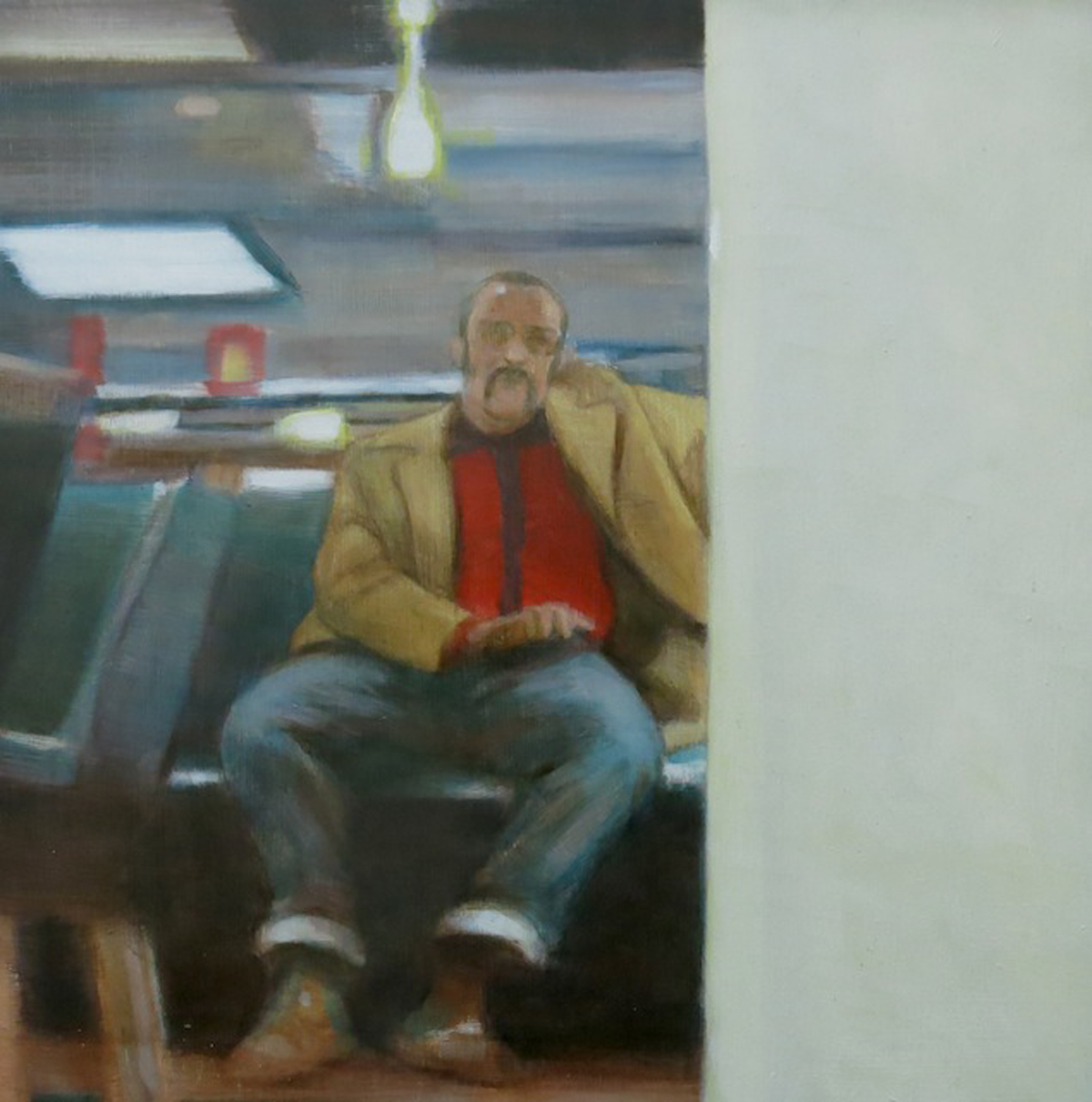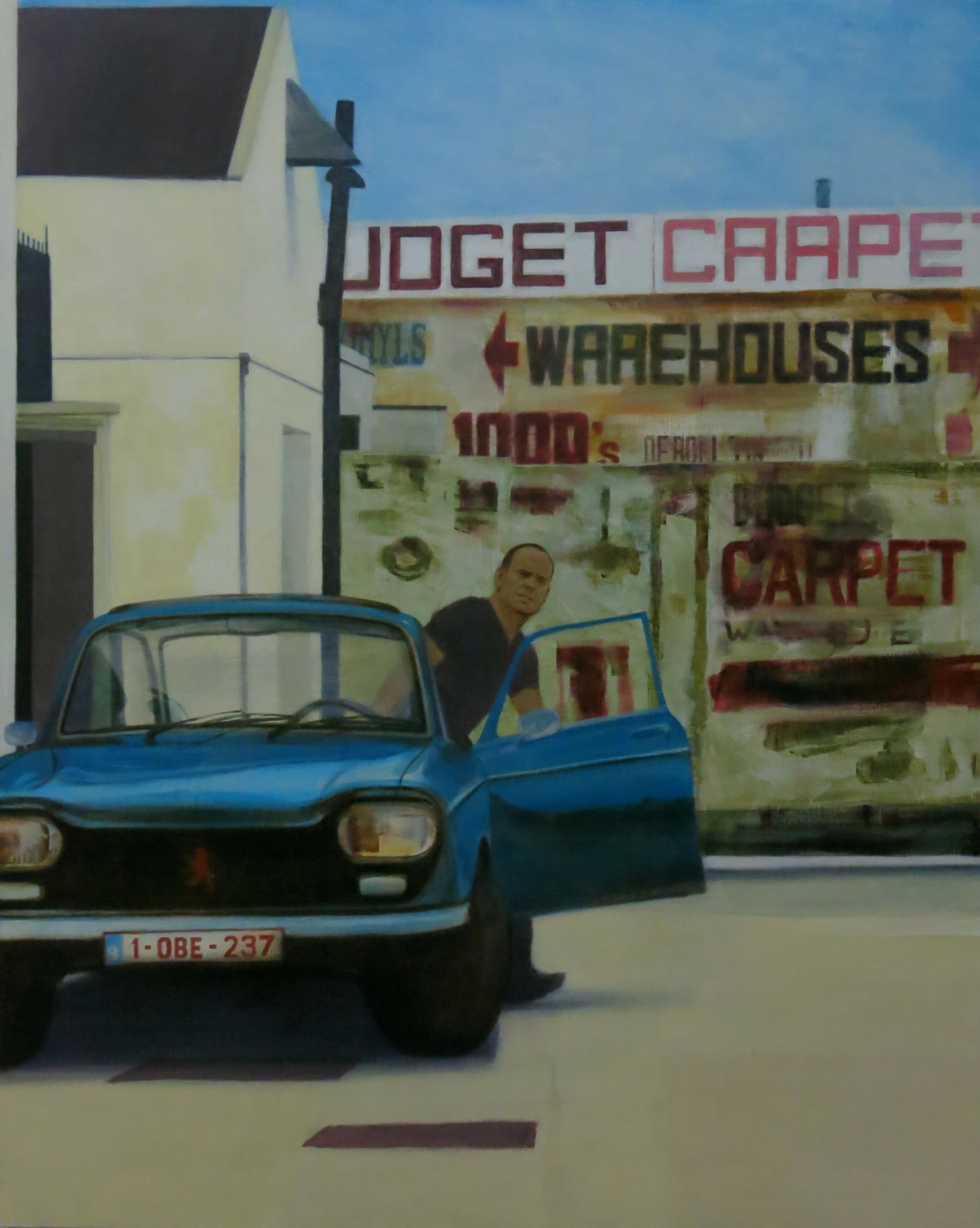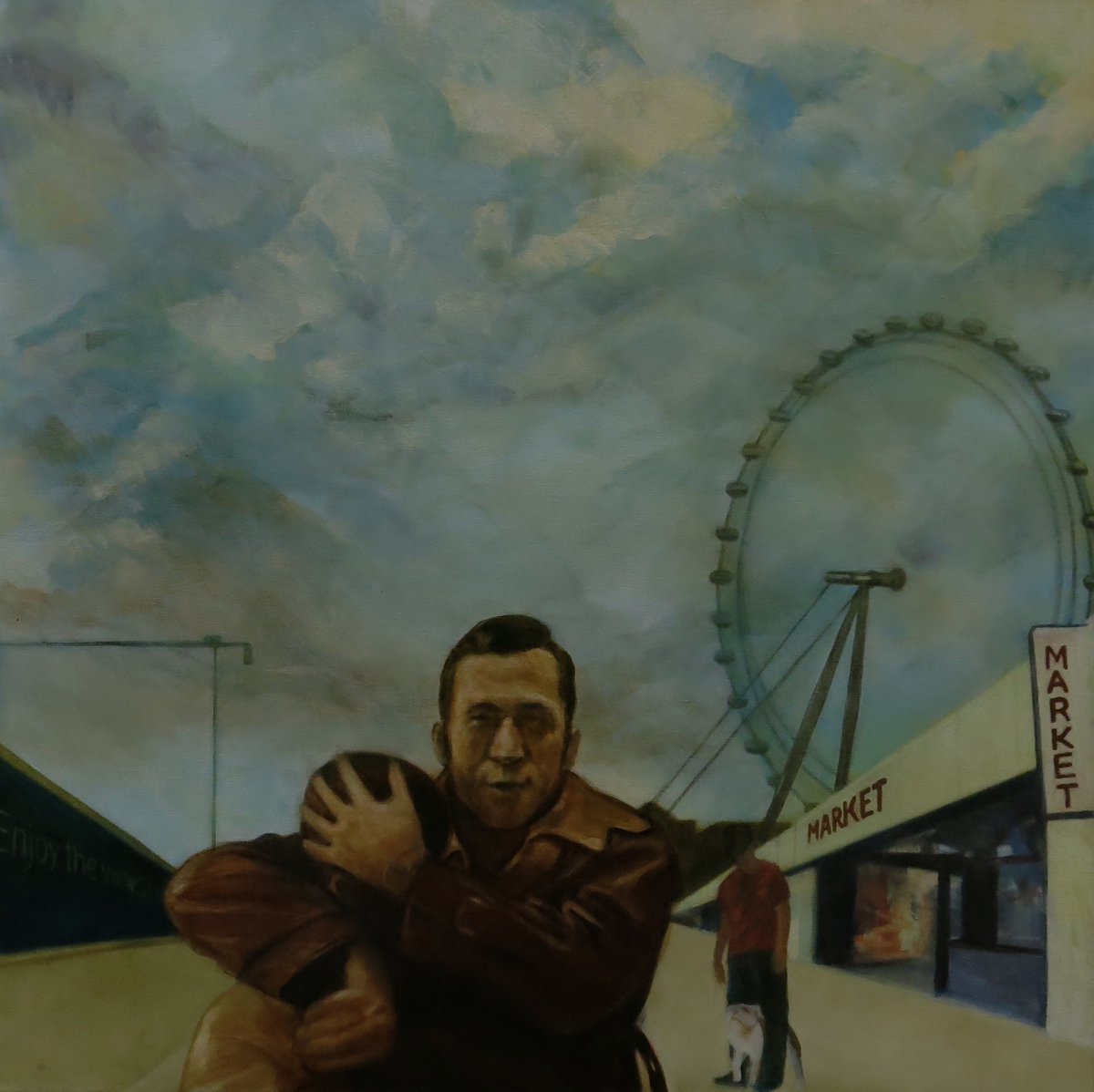Ray Richardson
Ray Richardson comes full-circle with a new solo show, coinciding with the re-opening of commercial galleries in the UK, a year since his show ‘London is Up for Grabs’ was curtailed due to the first lockdown.
“with new added flavour and with nothing but all positive vibes here’s Brighter Later with a pinch of last year’s show, a selection of small-but-handsome oil paintings and a big chunk of funk oil to cheer our souls in a week of goodness”
Ray Richardson
Ray Richardson B.A. A.R.E.
1964 Born Woolwich Dockyard, London
Education
1984-87 Goldsmiths BA Fine Art
1983-84 St Martin’s School of Art Foundation Course
Awards
2012 Artist in Residence Eton College
2012 Founders Painting Prize ING Discerning Eye
2007 Association of Painter Printmakers A.R.E.
2002 British Council Award
1999 British Council Award
1990 BP Portrait Award Commendation
1989 British Council Award
Selected collections/commissions
British Museum, London
Victoria and Albert Museum, London
Fondation Carmignac, Paris
The National Portrait Gallery, London
London Royal Shakespeare Company, Stratford
Ashmolean Museum, Oxford
Pallant House Museum, Chichester
De Beers Diamond Trading Co., London
Kasen Summer Collection, Connecticut & New York
Isle of Man Government Collection, Isle of Man
Royal Overseas League Collection, Edinburgh
St George’s Hospital Trust Collection, London
Ingram Collection, London
University of Warwick Collection, Warwick
Ruth Borchard Collection, London
Selected Exhibitions
2020
London Is Up For Grabs – Beaux Arts, London
2019
Brother From Another Mother – drawings with Mark Hampson, Ben Oakley Gallery, London
Same Meat Different Gravy – Zedes Art Gallery, Brussels
…And I Live By The River – Zedes Art Gallery, Brussels
2018
Made in London – Beaux Arts, London
2017
Country Got Soul – Glasgow Print Studio, Glasgow
Jeux Sans Frontières – with Guy Denning, Galerie Raison d’Art, Lille
2016
Fablon – with David Bray, Ben Oakley and Guy Denning, Ben Oakley Galley, London
You Caught Me Smilin’ Again – Zedes Art Gallery, Brussels
The Outer Limits – Galerie Clairefontaine, Luxembourg
Still Life – Style of Life – Former Galerie Alain Blondel Artists, Beauborg24, Paris
London Soul – Beaux Arts Gallery, London
2015
Linolcut – with Picasso, Peter Blake, Sol LeWitt, Wayne Thiebaud and Gary Hume, Paul Stolper Gallery, London
Art Car Boot Fair – with Art On a Postcard, London & Margate
Kevin Foursauds – with David Bray, Ben Oakley and Guy Denning, Ben Oakley Galley, London
Reality: Modern and Comtemporary British Painting – The Walker Art Gallery, Liverpool
2014
The Jack Lord – Ben Oakley Gallery, London
Reality: Modern and Comtemporary British Painting – The Sainsbury Centre for Visual Arts, University of East Anglia, Norwich
I Get Along – Boycott Gallery, Brussels
Kevin Threesauds Room To Let – with Ben Oakley and David Bray, Ben Oakley Gallery, London
2013
The Dog and Crow – with Guy Denning – Ben Oakley Gallery, London
Kevin Threesauds – with Ben Oakley and David Bray – Ben Oakley Gallery, London
2012
Keep The Faith – The Drawing Schools, Eton College
Everything Is Everything – Beaux Arts London, London
Homecookin’ – Boycott Gallery, Brussels
BP Portrait Award – National Portrait Gallery, London
Londons Topdog – Ben Oakley Gallery, London
Never Promised Poundland – with Cathie Pilkington and Mark Hampson No Format Gallery, London
2011
Londons No.One – Ben Oakley Gallery, London
L’ironie du Sort – Boycott Gallery, Brussels
2009
Just A Little Pinch Of London – Advanced Graphics, London
Music For Pleasure – Galerie Alain Blondel, Paris
Southern Comfort – Boycott Gallery, Brussels
2006
Leftfield – Eleven Fine Art, London
Rare Prints – Advanced Graphics, London
A to Z – Boycott Gallery, Brussels
2005
Ordinary People – New Arts Gallery, Connecticut
An English Phenomenon – Mendenhall Sobieski Gallery, Los Angeles
Not A Lot To Do – Boycott Gallery, Brussels
Lazy Sunday – Gallagher and Turner, Newcastle upon Tyne
2004
Days Like These – Fabien Fryns Gallery, Marbella
Storyville – Advanced Graphics, London
2003
Short Stories – Galerie Alain Blondel, Paris
Views From My Island – Boycott Gallery, Brussels
Absolute Richardson – Gallagher and Turner, Newcastle upon Tyne
2002
All Around The World – Fabien Fryns Gallery, Marbella
England Away with Mark Hampson – Gallery Aoyama, Tokyo
A London Film – Advanced Graphics, London
2001
Out Of Town – Boycott Gallery, Brussels
2000
London Calling – Boycott Gallery, Brussels
Jigsaw Puzzle – Galerie Alain Blondel, Paris
1999
OKUK with Mark Hampson – Gallery Aoyama & Laforet Museum, Tokyo
MFSB – Beaux Arts, London
1998
Tender Moments – Boycott Gallery, Brussels
The Circus Comes To Town – Galerie Alain Blondel, Paris
In Search Of A New Land – Mendenhall Gallery, Los Angeles
The Morecambe And Wise Show – with Mark Hampson, Glasgow Print Studio, Glasgow
1996
One Man On A Trip – Beaux Arts, London
The Luckiest Man In Two Shoes – Galerie Alain Blondel, Paris
1995
The Last Laughers – Boycott Gallery, Brussels
1994
Oostenders – Beaux Arts, London
1993
RA Summer Show – Royal Academy, London
Eastenders – Hunt Jennings Gallery, London
1992
Good Old England – Boycott Gallery, Brussels
Coals To Newcastle – Glasgow Print Studio, Glasgow
The Odd Man Out – Galerie Alain Blondel, Paris
1990
BP Portrait Award – National Portrait Gallery, London
The Sporting Life – Galerie 31 Lille
1989
The Cat In The Hat – Boycott Gallery, Brussels
1988
The John Player Portrait Award, National Portrait Gallery, London
Selected TV, Radio and Film
2019 Listed Londoner – BBC Radio London Robert Elms Show
2018 BBC Radio London Robert Elms Show
2016 Our Side Of The Water – Internationally award-winning film directed by Nina Degraeve
2016 BBC Radio London Robert Elms Show
2015 Art Car Boot Fair – Interview with London Live News
2012 Londons No.One – Shortlisted Edge Of the City Film Festival – Total Thrive Productions
2005 From the Artist’s Studio – BBC Radio 3
2004 Robert Elms Show – BBC Radio London
2004 Reflections – Film made by Ray Richardson and Glen Maxwell in association with Deptford Albany, London
2001 Titian – National Gallery, London
1999 Robert Elms Show – BBC Radio London
1997 & 1999 – Oil on Canvas BBC Productions/Arts Council of Great Britain for BBC 2
1998 Soccerarti – BFI Productions for LWT and CHANNEL 4
1993 Robert Elms Show GLR Radio London
Jake Auerbach Essay for Exhibition catalogue 5 March – 18 April 2020
Please Click link above
Ray Richardson: Lord of the Urban Jungle
Every day I go to the local library to spy. Spying is waiting, so I sit amongst other men, attached to old computers, and wait with my listening eye, honing my low-level-addiction.
Some of the men fill out online job-search diaries. Some play colourful computer games. Some gaze at escort girls. Some watch news footage of fields on fire. Some stare into air.
Each appear to be trying to unlock the traffic jam in their heads, trying to make a companion out of space, as they fathom the path from larger day to huger night, yet again; and, despite what I think, I am connected to them. I am one of them.
Ray Richardson is one of them. He is something else as well – a modern master of painting figures – figures not too dissimilar to the library-dwellers – caught in thought amongst the sprawl of his London.
It seems to me a work of art is the evidence offered by a fantastically observant witness – or spy -and I connect with Ray’s world because it revels in the superabundance of earthly life like an array of mirrors in which the human predicament leaps out at us.
Everybody has that feeling when they’re confronted by a canvas and its right, that sudden familiarity, a sort of recognition, as though they were creating it themselves, as though it were being created through them while they look at it or listen to it. He is
not afraid to share the fear that we belong to another, or to others, or to God.
We live in a symbolic society now – a symbol culture – signs everywhere, labels, sponsors, brands. Symbols are the definitions of being. Nothing has more value than symbology. However, the roots of his canvas-cast (and my fellow men and women in
the library) are part of an older seemingly bygone folk culture.
He details the dilemma of these two seismic opposites. Gone were the good old days. Today was the good old days. Against the odds, we come back stronger for (yet another) one last round. There is loss, yes, but also celebration, a luminous stoicism.
There is elegance as well, a tormented and comic elegance to the way his characters stand and bend.
The politics are not on the surface of the paintings but underneath, woven into the emotional architecture of the canvases. He lives inside the intestines of the place, of London, spying on the brain and the genitals.
His trick, his sleight-of-hand, or style – call it what you like – is to capture thewonder and doom of the thinking process, when thoughts dawn on us – on humans and animals – or dog’s – or one dog in particular – Brian the bull-terrier – his right-
hand mandog/canine alter-ego. He does this in a way that is neither depressing nor daft, but enlivening. He can fill and break your heart at once. Thats lingering beauty for you.
Art offers space – certain breathing room for the spirit. This is its central magic, its core of joy. And he revels in it, in the atmospheric delicacy of the canvas offering possibilities of dignity and poetry; the light sublime, like staring at a rusted bridge in
the sun, a blaze of blue sky or blue denim, the shuddering of windblown water, somebody’s skin glowing like milk, the great tide of daylight passing into evening; the paints, on fire, working wonders.
He has not only an eye but a taste, smell, touch, and ear for excruciating tone and anonymous hue. His canvases are zones of enigmatic solemnity and activity – so much energy and information on display, like soap operas imbued with a cinematic
sweep.
He raids film culture like Richard Burton’s seething, barking – dog-like – knife-wielding armed robber Vic Dakin in Villain (1971) raids banks. Film courses through his veins: the no-nonsense glare of peak-era Michael Caine inmthe 60s and early 70s, the wandering camera of Martin Scorsese’s maverick ode to mobster-living, mobster-cooking, mobster-music – Goodfella’s – and like David Lynch, he conjures up a strangely ordinary world that exists somewhere between a potent melodrama and a metaphysical urban noir. You see all sorts, in every sense of the phrase, including Ray himself sometimes, painted in there, full cameo, full mutton-chop sideburns, Andy Capp-cap on, like Scorsese himself in Taxi Driver orAlfred Hitchcock in his last London-set masterpiece Frenzy, bending the truth of narrative painting like he bends light, at his will with a psychic freedom.Something lifts the paintings beyond the representational registers of realism into the suggestive, mystical realm of meditation. Moments of the real world, the one we all experience, seem mysteriously taken out of time. Privacy and society conjoin in living colour.
Ray’s shot at the big one is on the horizon. He’s a genuine contender to one of those mythic titles that secretly drive all competitive artists. Watch him rise. See him out there, doing his road work, wiping the sleep from his eyes at the crack of dawn to go paint the crack of dawn with his own meticulous touch, painting himself into a corner with his own painted corners, defying the dictates of art-fashion, with Brian snoozing in the studio, adrift in Brian-land, lord of his own urban jungle.
Austin Collings
Writer, Filmmaker
FORWARD
Ray Richardson has notably painted men in packs — working-class conspirators, huddling or staring off in different directions, stoics up to no good. All to the good — but men are mere human beings — and, thus, in Big Ray’s world, they are relegated to second-class-citizen status.
Because Ray Richardson is a dogman. He paints dogs because he worships dogs. He most specifically worships the King of Dogs — the English Bull Terrier.
You’ve seen these wedge-headed, slope-snouted, bat-eared, beady-eyed, coarsecoated, whip-tailed motherfuckers. They’re shark-like. They love all humans and seek to kill all rodents and cats. They embody the great themes of Love and Death. They radiate glee and indiscriminate good cheer. They’re pure K-9 efficacy — and Ray Richardson gives us their transcendent souls. He portrays them among street-corner stoics up to no good. Maybe the stoics are planning a dope heist or a smash-and-grab. The bull terrier’s the brains of the operation. How does Big Ray get that point across? Because he rivets your eyes to the dog, not the men. Big Ray is a man. He’s a man who takes all his artistic cues from dogs, because dogs are superior to men, and bull terriers are the supreme K-9 kommanders. Big Ray longs to be a dog — and that’s a compliment. Big Ray paints from this immutable sense of longing.
Ray Richardson’s oil-on-canvas bull terriers are strident, whimsical, domineering, tender, and the kwintessence of K-9 form. They look simple on the surface. Ray Richardson paints them again, again, again, and again — reinventing and exploding this K-9 form, revising it, perfecting it, ever attentive, ever worshipful. How can anything so on-the-surface simple be so complexly depicted? The answer is this great British artist himself. He loves the bull terrier more and more. He paints them to express his growing gifts as an artist and his growing and ever-mutating love for this most magical beast.
I’ve been following Ray Richardson’s career for 25 years and I know whereof I bark.
The Exalted Dog,
James Ellroy
Novelist







